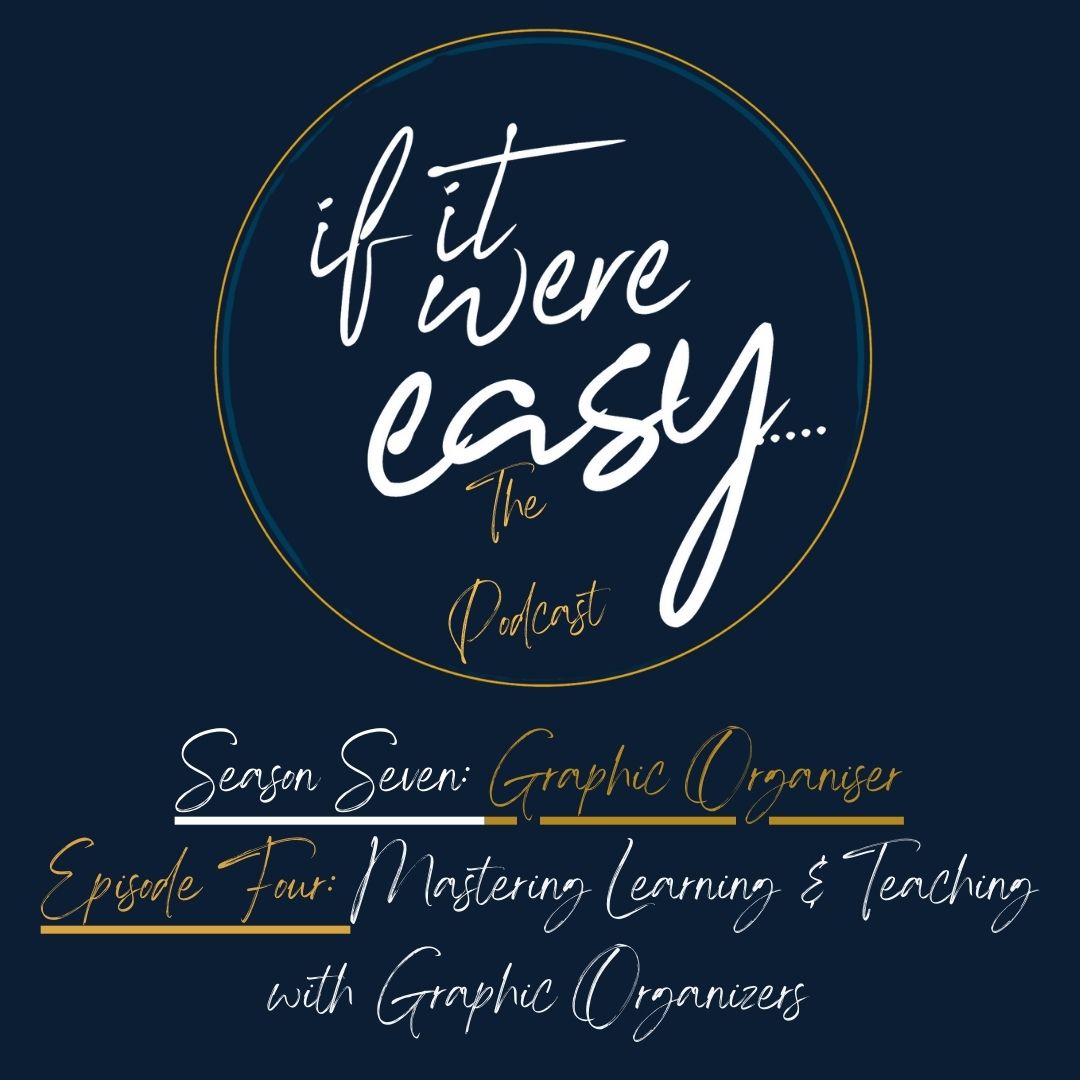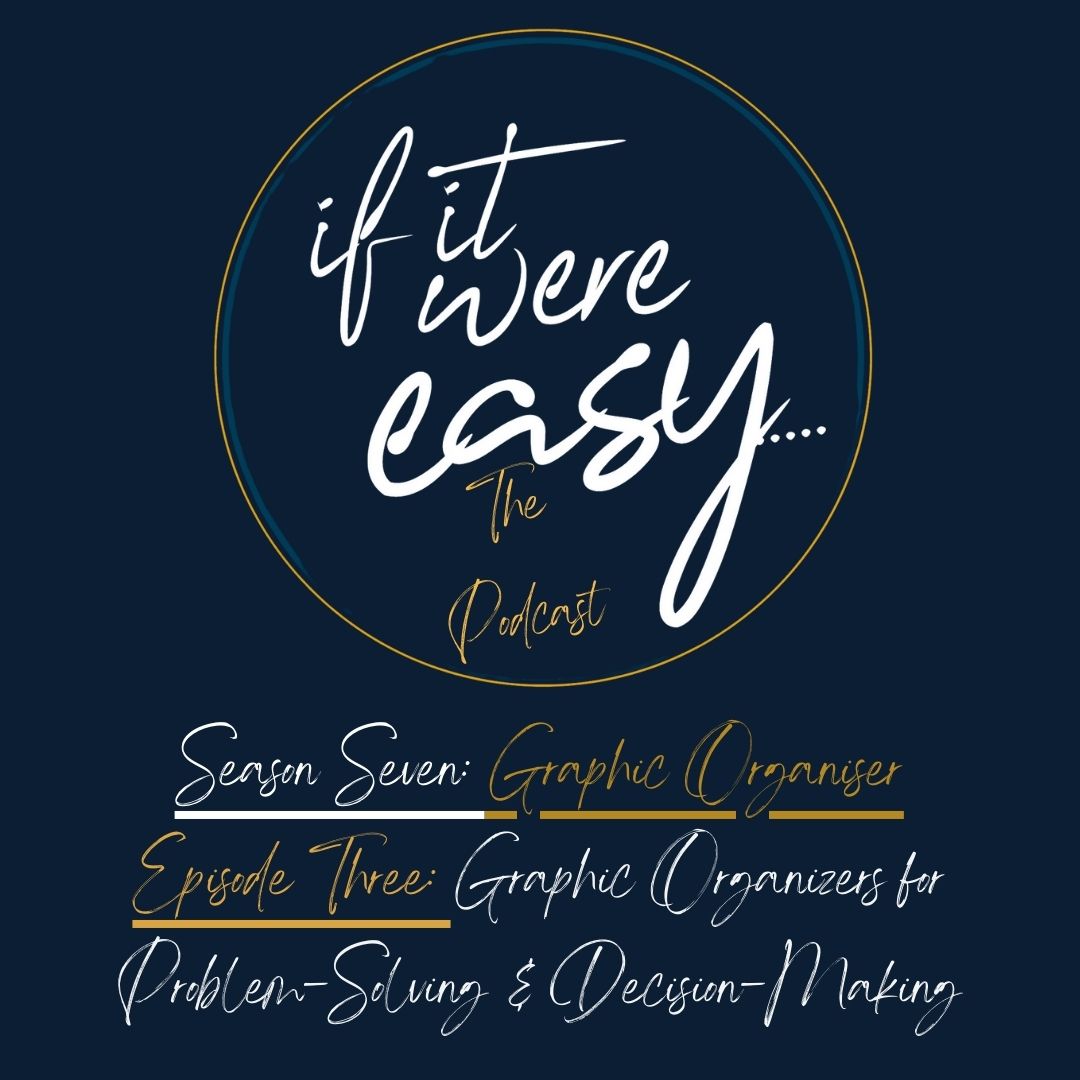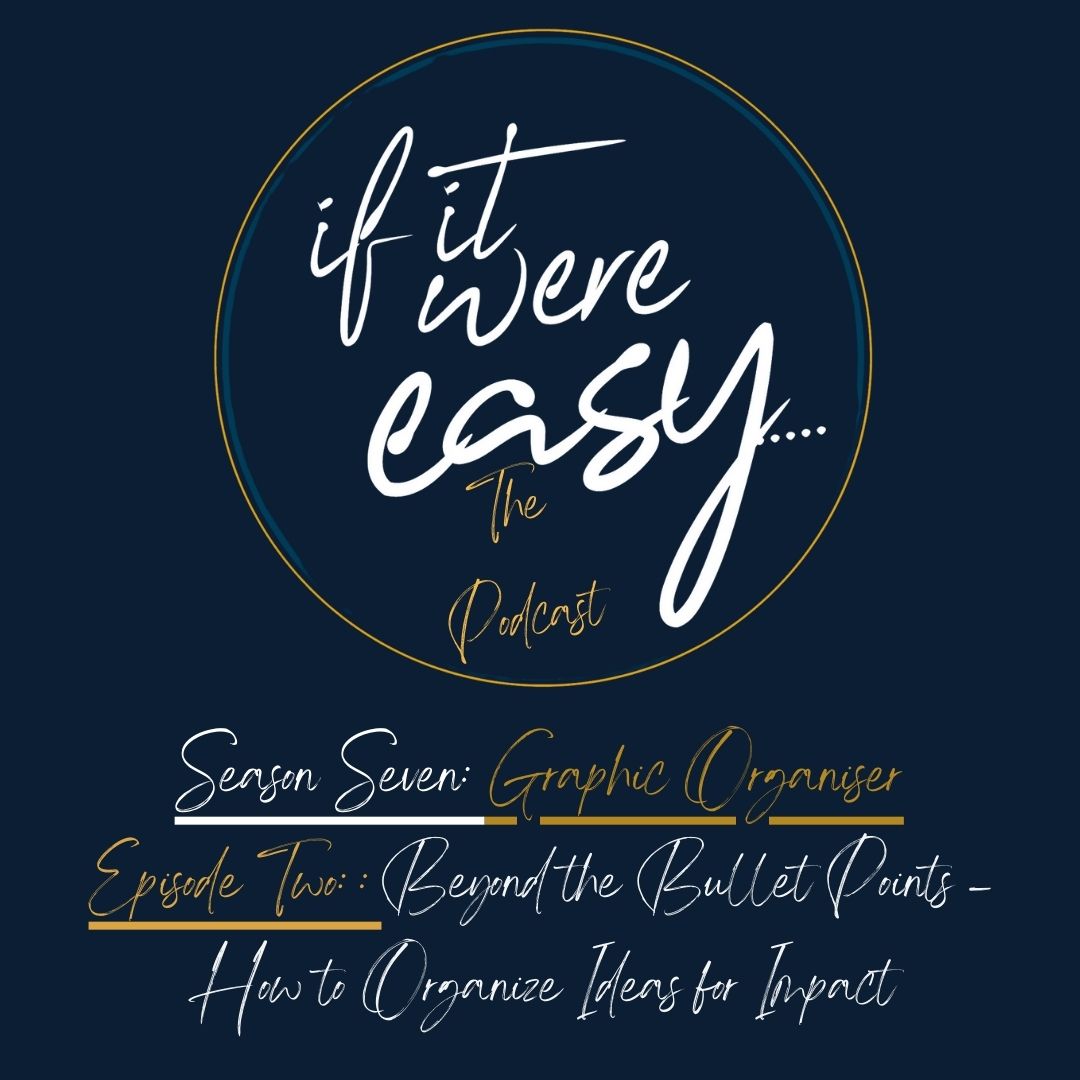Episode 4
Episode Overview
Why We Think Better Visually
In this episode of If It Were Easy, host Dawn Taylor explores the power of visual thinking and its impact on learning, teaching, and communication. This discussion highlights how graphic organizers such as Mind Maps, T-Charts, Flowcharts, and Venn Diagrams help students, educators, and professionals process, retain, and structure information more effectively.
By the end of the episode, listeners will understand why visual tools are essential for memory, comprehension, and problem-solving and how to start incorporating structured visuals into their daily routines.
Key Topics Covered in This Episode
- How visual thinking improves comprehension and retention
- The way the brain processes visual information differently from text
- The role of graphic organizers in learning and organization
- The benefits of using structured visuals for problem-solving
- How educators and professionals can implement these strategies effectively
Key Takeaways
Mind Maps – Organizing and Brainstorming
Mind Maps allow for the expansion of creative thinking by linking related ideas. They are particularly useful for lesson planning, essay structuring, and conceptual understanding. An example discussed in the episode includes mapping out an ecosystem by categorizing elements such as food chains, biodiversity, and climate factors.
T-Charts – Comparing and Contrasting
T-Charts are valuable tools for analyzing pros and cons, similarities and differences, or before-and-after scenarios. One example of their application is comparing World War I and World War II to identify causes and key outcomes.
Flowcharts – Structuring Step-by-Step Processes
Flowcharts help break down processes, sequences, and problem-solving methods. The episode highlights how they can be used to explain mathematical equations step by step, making problem-solving clearer and more structured.
Venn Diagrams – Identifying Overlapping Concepts
Venn Diagrams are useful for comparing two or more ideas, characters, or topics. An example includes analyzing the similarities and differences between two literary works in an English class to develop a deeper understanding of themes and character development.
Applying Graphic Organizers in Teaching and Learning
For Educators:
Teachers can integrate tools such as KWL Charts (Know, Want to Know, Learned) to track student progress and enhance engagement.
For Students:
Students can use graphic organizers for study strategies, essay planning, and exam preparation to improve retention and critical thinking.
For Professionals:
Structured visuals, including flowcharts and matrix diagrams, can streamline workflows, improve efficiency, and enhance team collaboration in professional settings.
Challenge of the Week
Try It Yourself:
This week, use a Mind Map or Concept Map to organize a topic, whether for a lesson, a research project, or personal goal-setting. Reflect on how it changes your ability to understand and retain information.
Discussion Question:
Did this approach help improve clarity and recall? Share your experience in the discussion at www.ifitwereeasy.org.
Additional Resources
- Blog Series: www.ifitwereeasy.org/blog
- Downloadable Graphic Organizer Templates and Guides: www.ifitwereeasy.org/resources
- Graphic Organizers Course: www.ifitwereeasy.org/course
Stay Connected
Engage in the conversation on Facebook, Twitter, Instagram, and YouTube. Search “If It Were Easy” to find discussions, additional resources, and community insights.
Subscribe and Review
If you found this episode valuable, subscribe and leave a review. Your feedback helps us continue to provide insightful discussions on structured learning and teaching strategies.
Next Episode Preview
Join us in the next episode as we explore how structured thinking can transform lesson planning, problem-solving, and student engagement.
Thank you for tuning in, and we look forward to seeing you in the next episode.




